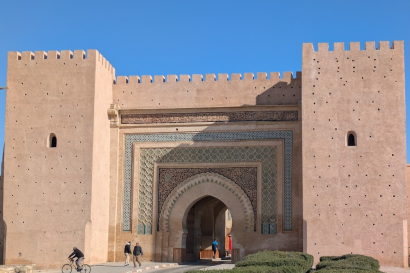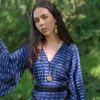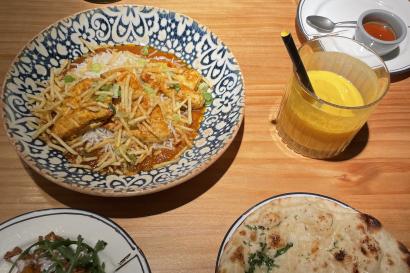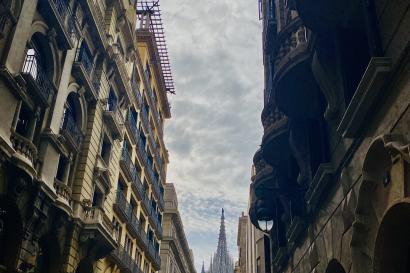
After just one short week of being in Rabat, we hopped on a plane and headed to West Africa. It was crazy how after one week, Rabat really did begin to feel like home. The flight to Dakar left at 11 pm and landed at one in the morning. I don't think I'll ever been able to complain about a redeye again!
Senegal is known as the Land of Teranga, or the Land of Hospitality, and we certainly experienced lots of teranga during our stay. A former IES Rabat student hosted us for dinner at her host family's house, which was wonderful! It was really nice to get a peek into daily family life in Senegal. In terms of meals, it wasn't too different from Morocco-- everyone uses bread as a utensil and eats from the same bowl/dish! On our last day, she treated us to a dancing and drumming lesson from some her Senegalese friends. While I was pretty terrible at dancing, the guys giving the lesson were fascinating. They own a place in Dakar called "Sous L'Arbre à l'Aise," which is a space where people of all nationalities, races, religions and genders can gather and enjoy music and food together. These concepts are classically Senegal, where people of all kinds mingle and schedules are merely suggestions. A l'aise is practically the unofficial motto of the country.
Although teranga and à l'aise lifestyle were abundant, Senegal was markedly different from Morocco. There was obvious poverty and there is no cafe culture, making the streets bustling. There was also more of a fitness culture-- an entire section of the Corniche (the main beach in Dakar) is an outdoor exercise facility, like Senegal's very own Muscle Beach. Colonialism and slavery also caste a shadow over Senegal, which we got to observe firsthand on Ile de Goree, a gorgeous island with a dark history just off the coast of Dakar. Ile de Goree was the first stop for many slaves before being sent to Europe or the Americas, making it a key element of the infamous triangle trade. Visiting the Maison des Esclaves definitely made me reflect on the dark history of slavery and the ramifications it has on Senegal and America today.
Despite the heavy history, Senegal was full of beautiful surprises. The Monument of the African Renaissance was a highlight, as well as the zoo! At the zoo, we were able to get really close to the animals. Close enough for a camel to try to snack on one of my friend's hair and for a baboon to fling its poop at me (there was a direct hit). The Presidential Palace was also incredible. One of the guards was kind enough to let us pose with him. We also developed a taste for bouye, a delicious juice made from the baobab tree. We brought some powdered bouye mix back to Rabat. Hopefully, it's just as good as the real deal! Another surprise was the market in Dakar-- there were a lot of unique pieces of art, but not for the timid to purchase. Nearly everything in Senegal is bought and sold with hard bargaining. Some of the others really got in the spirit of it. I mostly felt uncomfortable while doing it, but I did manage to get some lovely souvenirs!
Overall, the experience made me feel totally à l'aise in Senegal. I definitely want to return to Sub-Saharan Africa and West Africa sometime in the future. I hope to learn more about the political relationship between Morocco and Senegal, especially within the scope of immigration. Now, I just need to finish my malaria pills!

Chloe Zagrodzky
<p>Chloe Zagrodzky is a rising junior at Claremont McKenna College majoring in Government and Leadership. When not reading the Federalist Papers for the 100th time, she can be found practicing her French skills, running or preparing to compete with her Mock Trial team. Her list of favorite things includes dogs of all shapes and sizes, reasonably priced mochas and creative Instagram captions.</p>









